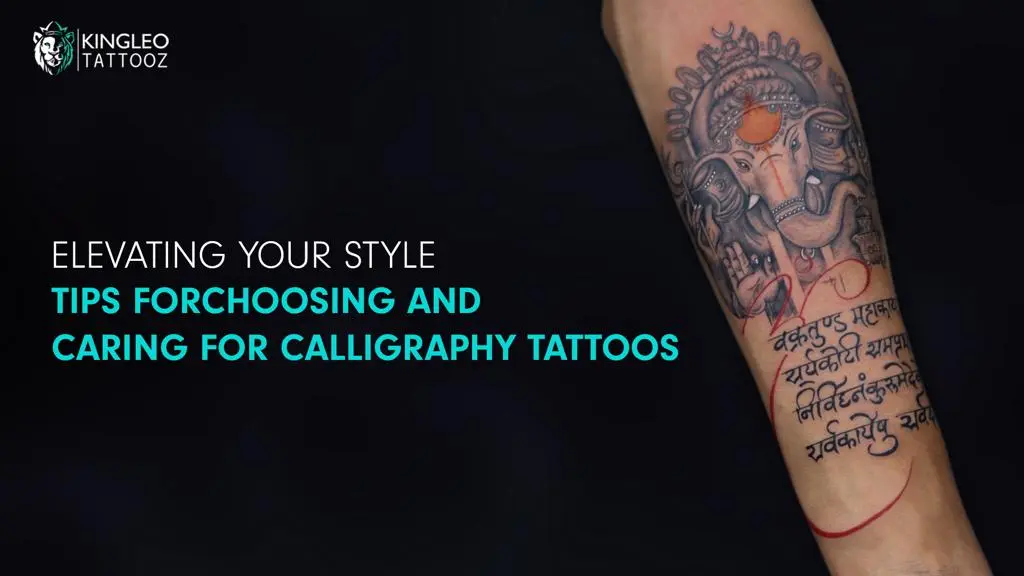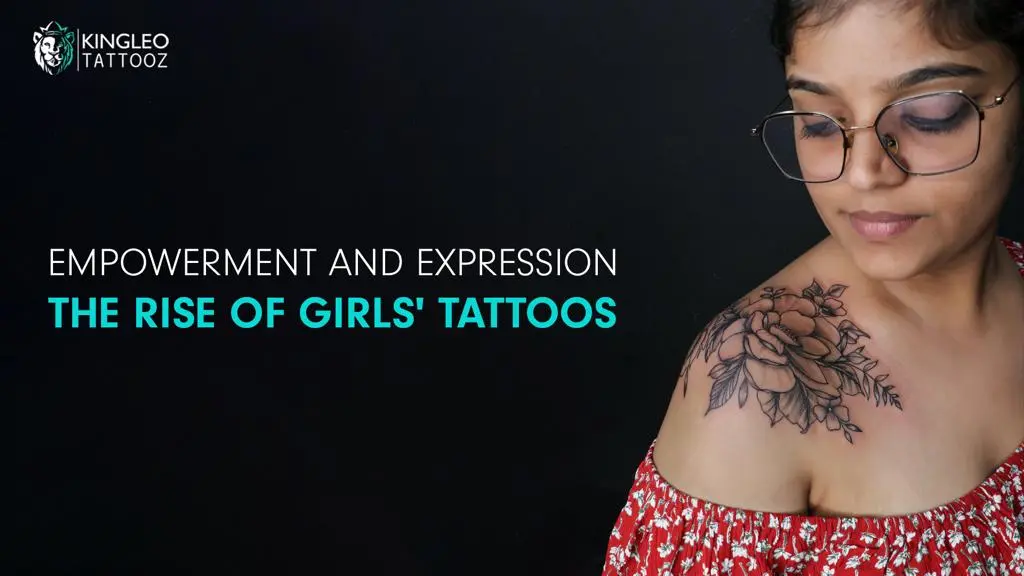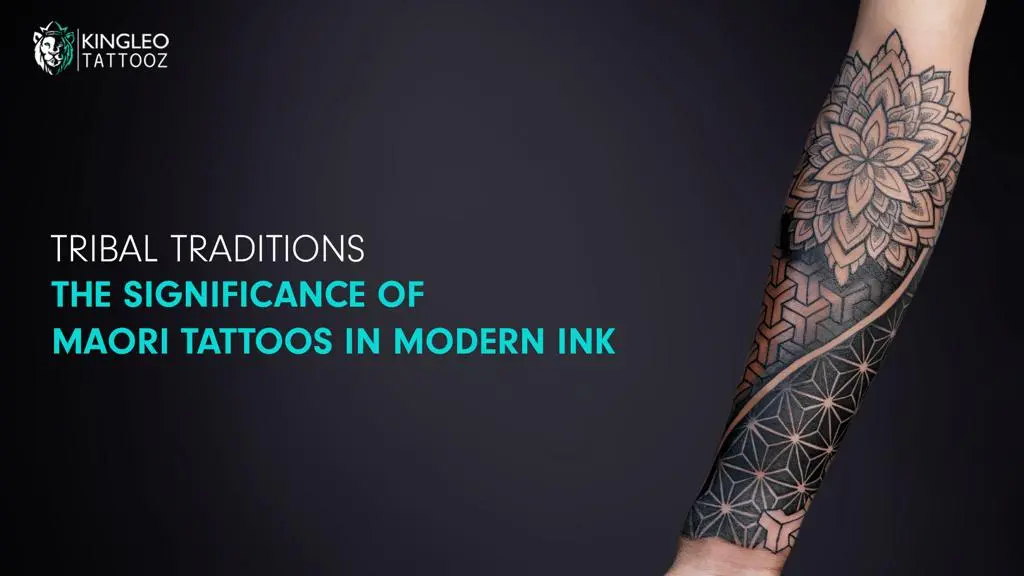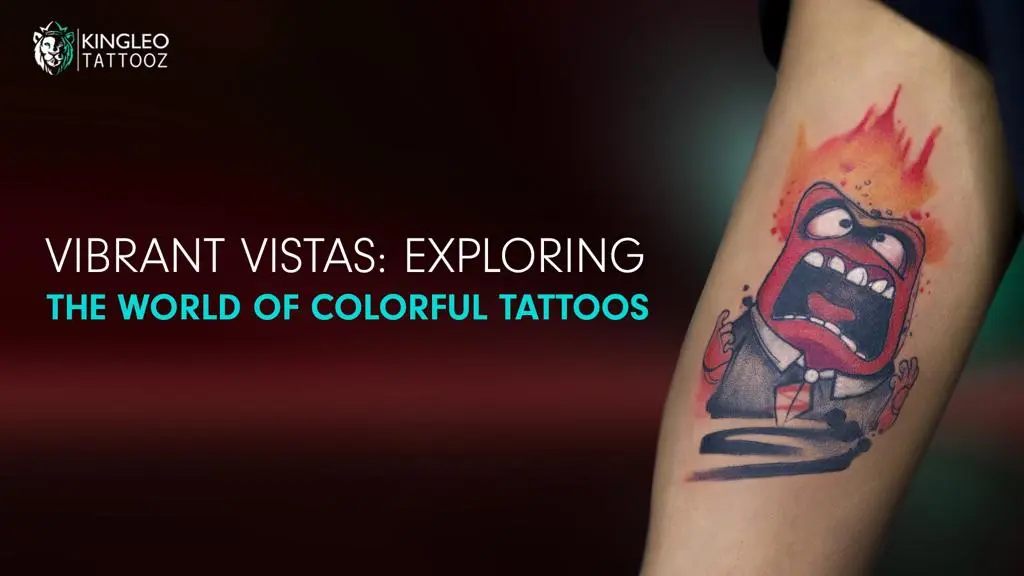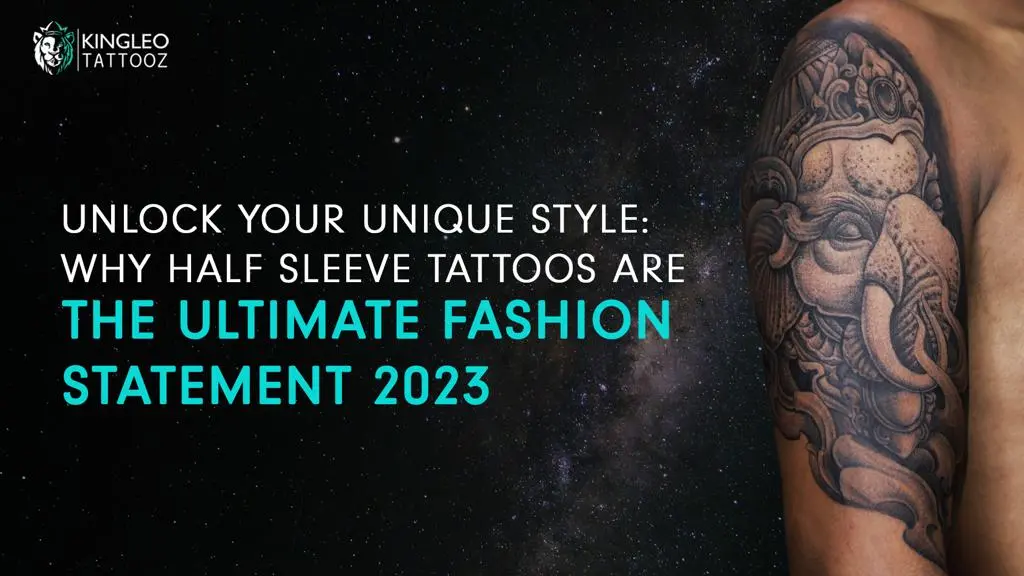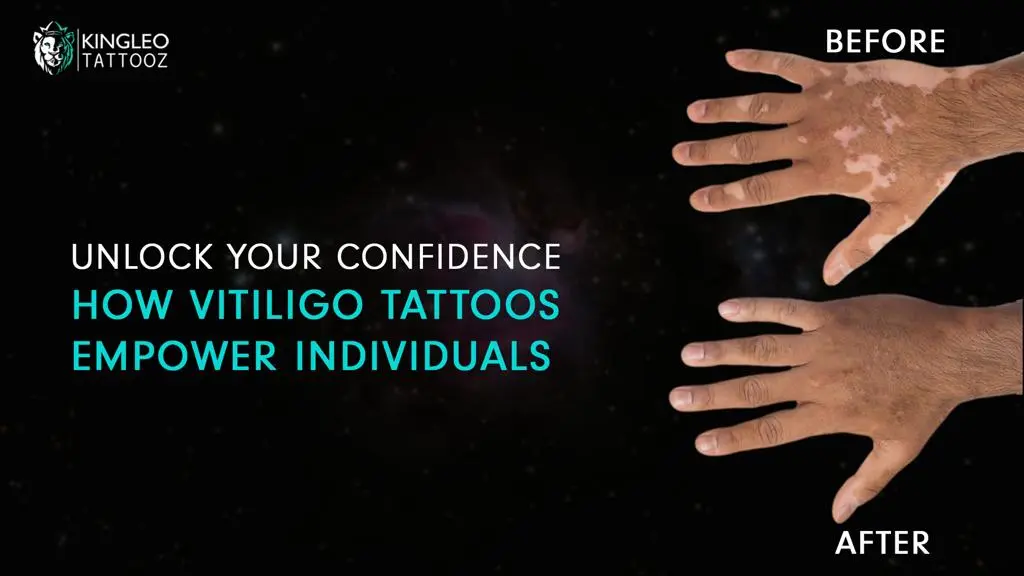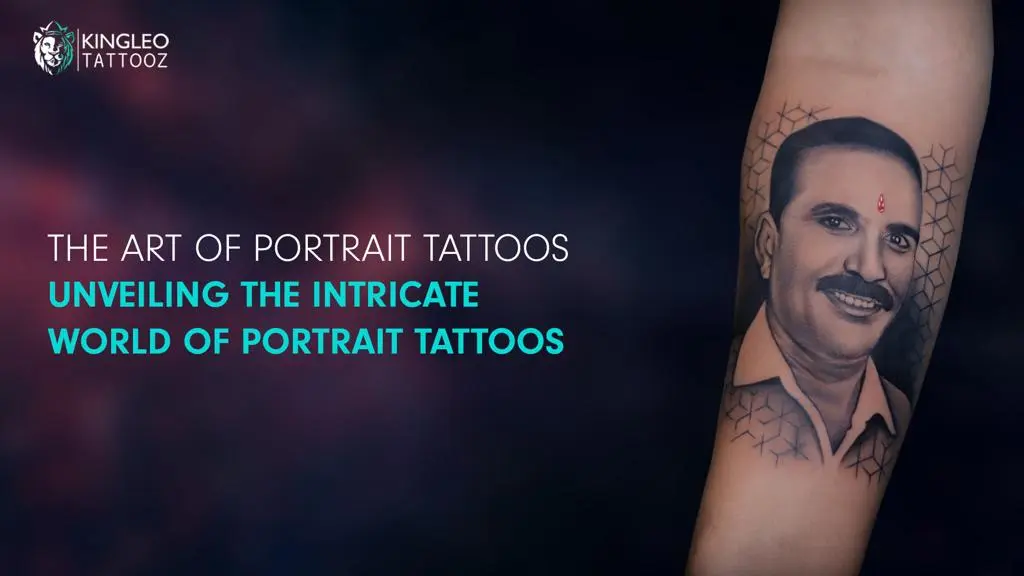
Unveiling the Intricate World of Portrait Tattoos
In tattoo artistry, portrait tattoos are a testament to the fusion of skill, creativity, and personal significance.
These intricately detailed tattoos are designed to immortalize the essence of a person, a pet, or a moment in time.
Through carefully crafting each line and shade, a skilled tattoo artist brings to life an indelible image on the canvas of human skin.
Portrait tattoos are a unique form of art that requires a high level of technical skill and artistic talent.
The tattoo artist must not only replicate the features of the subject accurately but also capture their essence and personality.
Creating a portrait tattoo begins with an in-depth consultation between the artist and the client.
The artist gathers as much information as possible about the subject, including photographs, personal stories, and anecdotes.
This helps them understand the subject’s character and allows them to capture their likeness and individuality in the tattoo design.
Once the artist has gathered all the necessary information, they begin translating the subject onto the skin.
They carefully study the reference images and use their knowledge of anatomy and shading techniques to create a realistic and three-dimensional portrayal.
Every line and shade in a portrait tattoo is crucial as they create depth, texture, and definition.
The artist utilizes various tattooing techniques, such as stippling, crosshatching, and blending, to achieve realistic skin tones and textures.
The result of a well-executed portrait tattoo is a striking and lifelike representation of the subject.
These tattoos possess incredible detail and can capture the emotions, expressions, and features of the person or pet being portrayed.
Portrait tattoos hold deep personal significance for the wearer.
They serve as a constant reminder of a loved one, a cherished memory, or a significant moment in their life.
These tattoos can evoke emotions and spark conversation, as people often inquire about the meaning and story behind them.
In conclusion, the art of portrait tattoos is a testament to the skill, creativity, and personal significance of tattoo artistry.
These tattoos immortalize the essence of a person, a pet, or a moment in time by carefully crafting each line and shade on the canvas of human skin.
The Craftsmanship Behind Portrait Tattoos
Creating a portrait tattoo is an art form that demands precision and a deep understanding of human anatomy.
The artist meticulously studies reference images, paying close attention to the nuances of facial features, expressions, and proportions.
With a steady hand and a discerning eye, they translate these details into a stunning visual representation.
Creating a portrait tattoo typically begins with a consultation between the artist and the client.
The artist listens carefully to the client’s vision and gathers any reference images they may have, such as photographs or drawings of the subject.
They discuss the desired size, placement, and style of the tattoo, ensuring they are on the same page.
Once the details are agreed upon, the artist begins an in-depth study of the reference images.
They analyze every aspect of the subject’s face, observing the subtle interplay between light and shadow, the shape and contour of each feature, and the unique characteristics that make the individual recognizable.
Next comes the crucial step of sketching the portrait directly onto the client’s skin or on transfer paper for guidance.
The artist uses a variety of fine-tipped markers or pens to outline the composition, capturing the essence of the subject’s likeness accurately.
This process may take several iterations until the artist and the client are satisfied with the final design.
With the outline complete, the artist begins the tattooing process. They carefully select the appropriate needles, ink hues, and shading techniques to achieve depth and dimension in the tattoo.
They work diligently, paying careful attention to the subtle details, such as wrinkles, freckles, or other unique facial characteristics, to bring the portrait to life.
Throughout the tattooing process, the artist frequently steps back to assess the overall likeness and make any necessary adjustments.
They may need to refine certain areas, add or reduce shading, or fine-tune the proportions to ensure a faithful subject representation.
After completing the tattoo, the artist applies a protective ointment and covers it with a bandage to facilitate the healing process.
They provide thorough aftercare instructions to ensure the tattoo heals correctly, preserving its vibrancy and detail.
Over time, the tattoo will settle into the skin, becoming a lasting tribute to the person portrayed.
Creating a portrait tattoo requires exceptional technical skill, an artistic eye, and a profound understanding of human anatomy.
The artist’s passion and dedication shine through in each meticulously crafted detail, resulting in a stunning piece of art that captures the essence of an individual for a lifetime.
The Significance of Personal Connection
Unlike other forms of body art, portrait tattoos often hold profound sentimental value.
They serve as a tribute to loved ones, a memorial for those who have passed, or a celebration of life’s milestones.
Each stroke of the needle is infused with emotion, turning the tattoo into a living, breathing memory.
Portrait tattoos are a unique form of body art that goes beyond mere aesthetics.
They can deeply touch the wearer and viewers as they encapsulate a person’s essence or commemorate a significant moment.
A portrait tattoo can be a tribute to a loved one.
It could immortalize a parent, child, partner, or friend, allowing the wearer to carry their image and presence wherever they go.
These tattoos are a constant reminder of the bond shared with the person portrayed, keeping their memory alive and offering comfort during grief or longing.
Similarly, portrait tattoos can be memorials for those who have passed away.
By permanently etching the face of someone who has crossed over onto their skin, individuals can create a lasting connection to their lost loved ones.
These tattoos not only provide a personal and private space for remembrance but also offer an opportunity for others to engage in conversations about the person being memorialized.
Portraits may also celebrate life’s milestones and achievements.
They can mark significant events such as graduations, weddings, or the birth of a child.
These tattoos become symbols of personal growth, success, and joy, reminding the wearer of their accomplishments as they progress.
The emotional impact of portrait tattoos comes not only from the image itself but also from the artistry and skill of the tattoo artist.
Each stroke of the needle becomes a deliberate and deliberate act infused with the artist’s understanding of the subject’s personality and the wearer’s emotional connection to them.
A skilled artist can capture the person’s essence, bringing the tattoo to life and making it more than just an image on the skin.
In this way, portrait tattoos transcend the traditional notion of body art. They become potent vessels of emotion and memory, capable of evoking a wide range of feelings for the wearer and those who encounter the tattoo.
These tattoos serve as tangible reminders of our connections, our losses, and our triumphs, transforming the body into a canvas for storytelling and personal expression.
The Significance of Personal Connection
Unlike other forms of body art, portrait tattoos often hold profound sentimental value.
They serve as a tribute to loved ones, a memorial for those who have passed, or a celebration of life’s milestones.
Each stroke of the needle is infused with emotion, turning the tattoo into a living, breathing memory.
Portrait tattoos are a unique form of body art that goes beyond mere aesthetics.
They can deeply touch the wearer and viewers as they encapsulate a person’s essence or commemorate a significant moment.
A portrait tattoo can be a tribute to a loved one.
It could immortalize a parent, child, partner, or friend, allowing the wearer to carry their image and presence wherever they go.
These tattoos are a constant reminder of the bond shared with the person portrayed, keeping their memory alive and offering comfort during grief or longing.
Similarly, portrait tattoos can be memorials for those who have passed away.
By permanently etching the face of someone who has crossed over onto their skin, individuals can create a lasting connection to their lost loved ones.
These tattoos not only provide a personal and private space for remembrance but also offer an opportunity for others to engage in conversations about the person being memorialized.
Portraits may also celebrate life’s milestones and achievements. They can mark significant events such as graduations, weddings, or the birth of a child.
These tattoos become symbols of personal growth, success, and joy, reminding the wearer of their accomplishments as they progress.
The emotional impact of portrait tattoos comes not only from the image itself but also from the artistry and skill of the tattoo artist.
Each stroke of the needle becomes a deliberate and deliberate act infused with the artist’s understanding of the subject’s personality and the wearer’s emotional connection to them.
A skilled artist can capture the person’s essence, bringing the tattoo to life and making it more than just an image on the skin.
In this way, portrait tattoos transcend the traditional notion of body art.
They become potent vessels of emotion and memory, capable of evoking a wide range of feelings for the wearer and those who encounter the tattoo.
These tattoos serve as tangible reminders of our connections, our losses, and our triumphs, transforming the body into a canvas for storytelling and personal expression.
Mastering the Portrait Tattoo Process
The Consultation: A Crucial Step
A successful portrait tattoo begins with a thorough consultation. During this phase, the artist and client engage in a detailed conversation about the subject, its significance, and the desired style.
This exchange lays the foundation for the artist’s creative process, ensuring that the final result aligns with the client’s vision.
The consultation allows the artist to understand the client’s expectations, preferences, and any specific details they want to include in the portrait.
This is also an opportunity for the artist to share their expertise and provide suggestions or insights to enhance the design.
The subject of the portrait holds great importance and can vary greatly.
It could be a family member, a beloved pet, a historical figure, or a fictional character.
Understanding the subject’s significance helps the artist capture its essence and convey the desired emotions in the tattoo.
The desired style is another crucial aspect discussed during the consultation.
The artist may ask about the client’s preferred style, such as realism, black and gray, traditional, or neo-traditional.
They may also inquire about any specific artistic techniques or details the client wants to incorporate, like a particular color palette or background elements.
Once all the necessary information is gathered, the artist begins their creative process.
They utilize their artistic skills, creativity, and technical expertise to design a concept that brings the client’s vision to life.
This often includes sketching or digital renderings to visualize the tattoo before it is permanently inked on the client’s skin.
During the design phase, the artist may also address any concerns or limitations.
They may discuss the practicality of specific design elements, adapt the artwork to fit the desired placement on the body or propose alternative ideas to enhance the overall composition.
Once the design is finalized, the tattooing process begins.
A skilled artist will ensure that they have a clear understanding of the desired placement, size, shading, and color scheme to create a lifelike and visually appealing portrait.
Communication between the artist and the client remains vital throughout the tattooing process to ensure that the client is satisfied with the progress and that any adjustments can be made if necessary.
Overall, a successful portrait tattoo requires a thorough consultation that establishes clear communication between the artist and the client.
This process allows for a collaborative effort that ensures the final result not only reflects the client’s vision but also showcases the artist’s talent and creativity.
From Paper to Skin: The Artistic Process
Once the concept is crystallized, the artist sets to work, sketching and refining the design.
This blueprint serves as a roadmap for the tattooing process.
With a steady hand and a keen eye for detail, the artist transfers the design onto the client’s skin, carefully layering shades to create depth and realism.
Throughout the tattooing process, the artist uses specialized equipment, such as a tattoo machine, needles, and ink, to accurately and precisely recreate the design on the client’s skin.
The artist may start by outlining the design, using clean, confident strokes to establish the shape and form.
Next, the artist fills in the larger areas of the tattoo, carefully working within the lines to create solid blocks of color.
This requires a steady hand and meticulous attention to detail, as any mistakes or unevenness can affect the overall appearance of the tattoo.
As the artist progresses, they may switch between needle configurations to achieve different effects, such as shading or adding texture.
The artist carefully layers various shades of ink, gradually building up depth and dimension.
This process requires a delicate touch, as too much pressure or too many layers of ink can result in a blurry or smudged appearance.
Throughout the process, the artist continuously checks the design against the original blueprint, making adjustments to ensure accuracy and fidelity to the client’s vision.
The artist may periodically step back to assess the tattoo from a distance, ensuring it looks balanced and harmonious on the client’s skin.
Once the tattoo is completed, the artist carefully cleans the area and applies a protective ointment or bandage to promote healing.
They may provide the client with aftercare instructions to ensure proper recovery and maintain the tattoo’s longevity.
In summary, the tattooing process involves the artist sketching and refining the design, transferring it onto the client’s skin, and using specialized equipment and techniques to recreate the design with depth and realism meticulously.
The artist’s steady hand and attention to detail are crucial in creating a visually appealing and long-lasting tattoo.
The Healing Process: Nurturing Your New Artwork
After the tattooing process is complete, it’s crucial to follow proper aftercare procedures.
This includes keeping the area clean, applying recommended ointments, and avoiding exposure to harsh elements.
This nurturing phase ensures your portrait tattoo heals beautifully, maintaining its vibrancy and clarity. There are several essential steps to follow for proper aftercare of a tattoo:
1. Gently clean the tattoo: Once the bandage is removed, gently wash the tattooed area with lukewarm water and a mild, fragrance-free soap or cleanser. Use your clean hands to avoid introducing any contaminants. Pat the area dry with a clean towel, avoiding rubbing, which can irritate.
2. Apply a thin layer of ointment: Follow the artist’s instructions on what type of ointment or tattoo aftercare product to use. Apply a thin layer of the recommended cream to the tattooed area, ensuring not to overapply. This helps keep the tattoo moisturized and protects it from infections.
3. Avoid tight clothing and irritants: During the healing process, it is essential to avoid wearing tight dresses that can rub against the tattoo. Also, avoid exposing the tattoo to irritating substances such as excessive sunlight, chlorinated water, saunas, or hot tubs.
4. Moisturize regularly: As the tattoo heals, it may dry and itchy. Apply a fragrance-free and non-comedogenic moisturizer to keep the tattoo adequately moisturized. Avoid scratching or picking at the tattoo, leading to scarring and faded colors.
5. Be cautious with physical activities: Avoid strenuous activities and exercise that may cause excessive stretching or sweating in the tattooed area. Sweat and friction can irritate the tattoo and prolong the healing process.
6. Protect from the sun: Protect your healing tattoo from direct sunlight and tanning beds, as UV rays can fade the colors and damage the skin. If you need to be in the sun, cover the tattoo with clothing or use a broad-spectrum sunscreen with a high SPF.
7. Follow-up care: It is essential to follow any additional aftercare instructions provided by the tattoo artist. They may recommend specific products, timelines for moisturizing, or follow-up appointments to ensure proper healing and touch-ups if needed.
By following these aftercare procedures, you can help ensure your tattoo heals appropriately, minimizing the risk of infections, fading, or other complications.
It is essential to consult with your tattoo artist for their specific recommendations, as aftercare instructions may vary based on the size, location, and type of tattoo.
Conclusion: A Timeless Tribute
A well-executed portrait tattoo is more than ink on the skin; it’s a living testament to the beauty of human connection and the artistry that brings it to life.
As the years pass, your portrait tattoo will continue to tell a story, preserving the essence of the subject for generations to come.
Addressing Common Queries
The duration of a portrait tattoo’s creation depends on various factors, including size, complexity, and the client’s pain tolerance. On average, a medium-sized portrait tattoo may take four to six hours, spread over multiple sessions.
Tattooing does involve some level of discomfort, as it entails the insertion of needles into the skin. However, pain tolerance varies from person to person. Many clients liken the sensation to a combination of scratching and mild burning. The artist will work at a pace comfortable for the client, ensuring a positive experience.
Selecting the right artist is pivotal in achieving a stunning portrait tattoo. Look for professionals with a portfolio showcasing their expertise in portrait work. Additionally, I read client reviews and request to see healed tattoos to gauge the artist’s skill and technique.
Absolutely. Your portrait tattoo should be a reflection of your connection to the subject. You can collaborate with the artist to incorporate elements with special meaning, whether a favorite flower, a symbolic background, or a meaningful quote.

